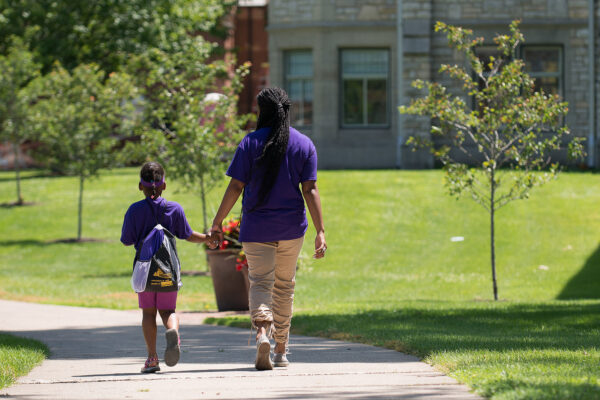By Laura W. Perna & Elaine W. Leigh

The United States cannot reach the levels of higher educational attainment required for international competitiveness in a global, technologically driven economy without closing the considerable gaps in attainment across groups. Despite noteworthy efforts by federal and state governments, colleges and universities, foundations and others, college enrollment and completion continue to vary based on demographic characteristics such as family income, race/ethnicity and parents’ education. Higher education attainment rates also vary widely across and within states.
One emerging strategy for increasing higher education attainment is the “college promise” program, which currently are being developed across the country by colleges and universities as well as foundations, private corporations, and state and local governments. As of August 2016, there were 33 promise programs in California alone; 13 of these programs were established in 2016. Promise programs also include the free college initiatives authorized by Tennessee, Oregon and Minnesota and proposed in January by governors Andrew Cuomo of New York and Gina Raimondo of Rhode Island. The Education Commission of the States reports that at least 23 states have considered 47 bills related to free college since 2014.
If we are to close persisting gaps in college enrollment and degree completion—and raise higher education attainment to the level required for workforce readiness and international competitiveness—we need a different approach. Whether promise programs help achieve these goals will depend on how the programs are structured, implemented and sustained.
What Is a Promise Program?
With support from Civic Nation, we have spent the past 18 months bringing order to promise-type programs that are operating and emerging across the nation. Using databases developed by the College Promise Campaign and the Upjohn Institute for Employment Research as a starting point, and with assistance from our research team (Devon Hernandez, Glen Casey, Vanessa Khoo, Roman Ruiz, Ashley Napier, Stephanie Miller and Destiny McLennan), we created a comprehensive searchable database that includes more than 200 programs operating in 40 states and Washington, DC.
The programs in the database vary in many ways, raising questions about the defining characteristics. We define a promise program as one that incentivizes college attainment by rewarding students who satisfy specified criteria. Some programs offer guaranteed admission to a particular college or university, or transfer of credit from a community college to a four-year institution. The most common type of promise offered by programs in our database is financial support to offset the costs of college.
Promise programs also include a “place-based” requirement. Programs recognize place by requiring residency in a designated state, city, county, or school district, and/or attendance at particular K-12 school(s). A place-based requirement ostensibly recognizes that college-going opportunities depend on where students live and attend school. As Nicholas Hillman and Taylor Weichman argue in a recent ACE report, place still matters.
Will Promise Programs Improve Higher Education Attainment?
Whether college promise programs improve higher education attainment—and close persisting gaps across groups—will depend on whether students from underserved groups participate in and benefit from the programs. While an emerging body of research examines outcomes of some relatively long-standing promise programs, more research is required to determine the ideal designs of programs serving students in different sectors of higher education in different communities, regions and states. We also need to know more about the effects of program design on outcomes not only for students, but also K-12 schools, colleges and universities, communities and states. Most programs limit benefits to traditional-age students transitioning directly from high school to college. While few initiatives currently address the challenges faced by adults who wish to enter, or reenter, higher education, adult promise models are receiving some attention from state and national policymakers and foundations (e.g., Education Commission of the States, SHEEO/Lumina Foundation, Tennessee Promise).
Outcomes will likely be better for programs that recognize the many forces that promote higher education attainment, including financial resources as well as academic readiness. Outcomes will also likely be better when students are encouraged to engage in behaviors that support college success (e.g., taking rigorous academic courses in high school). But whether this encouragement occurs depends on if students and their families are aware of programs early enough to take necessary action. Student outcomes also will depend on the resources and support available at the destination higher education institution. For programs that limit awards to students attending community colleges, long-term outcomes will depend on the transfer of credit to a four-year institution.
The effects of promise programs on degree attainment also are contingent upon the characteristics of the financial award. Most programs offer an award that is renewable (generally up to four or eight semesters). But most financial awards are limited to tuition and fees, with no attention to other costs of attendance. Many programs provide last-dollar awards. Unlike first dollar awards, last-dollar awards are reduced by other financial aid received. As such, last-dollar awards typically provide larger financial awards to middle- and upper-income students than low-income students.
Whether a program closes gaps in higher education attainment will also depend on its sustainability. Program costs can be substantial and will increase with the magnitude of the award, support services offered and number of students served. Questions about the financial sustainability of a program create further questions about whether completion of eligibility requirements will result in the promised award. The College Promise Campaign and the Educational Testing Service are partnering to advance knowledge of potential financial models, including children’s savings accounts, private funding, public-private partnerships, income-share agreements and social impact bonds.
What Are the Implications for Colleges and Universities?
The implications of promise programs for colleges and universities depend on program characteristics and structure. Some higher education institutions have established promise programs (e.g., Cerritos College, Shoreline College), while others have partnered with a K-12 school or district to create a program (e.g., Ontario-Montclair Promise, Say Yes Syracuse). Some colleges and universities are, or will be, destinations for recipients of promise-program awards (e.g., community colleges in Tennessee), while others may find that promise programs encourage students to attend other (perhaps competing) institutions.
When establishing a promise program, colleges and universities must consider the intended and unintended consequences of program design. Who will benefit from the program? Will the program encourage not only enrollment, but also degree completion? Will the program provide benefits to students who would not otherwise attain a college degree? Institutional leaders should also consider ways to adapt their own practices to align with and respond to state and local promise programs in ways that best promote attainment for students from historically underrepresented groups and students living in communities with low educational attainment rates.
Promise programs have the potential to increase higher education attainment and close persisting gaps. Achieving this potential requires designing sustainable programs that attract, benefit, and support students who would not otherwise enroll and complete college.
If you have any questions or comments about this blog post, please contact us.



